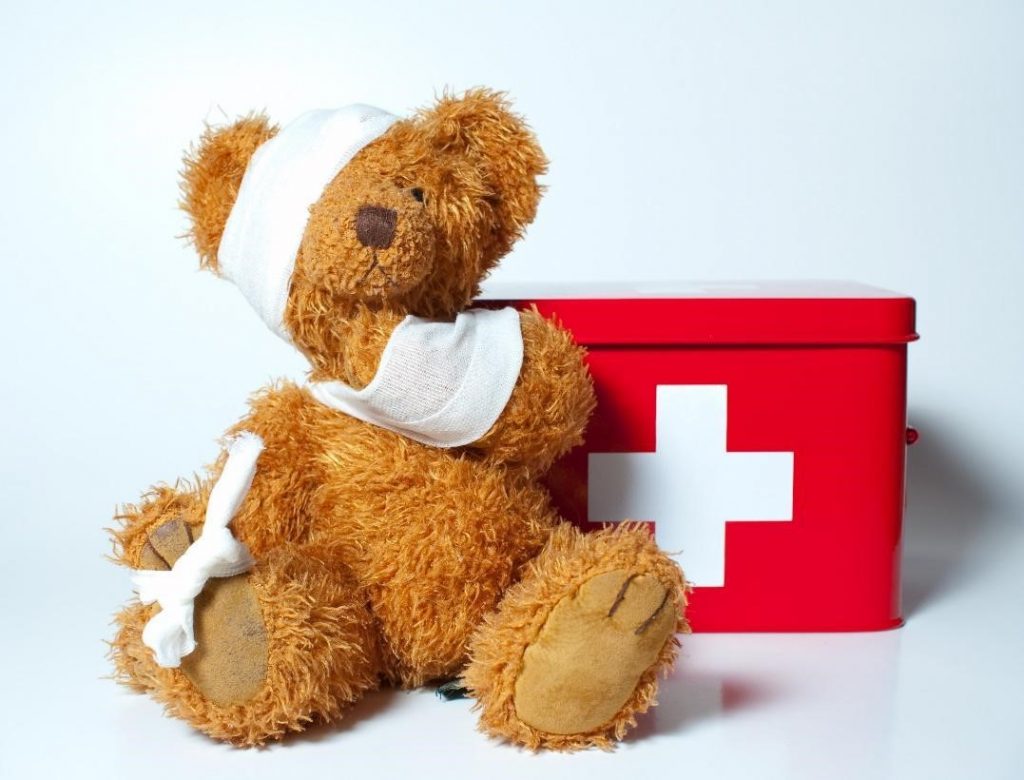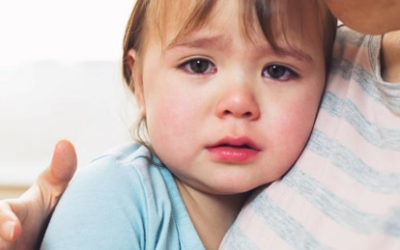Accidents happen but having a well-stocked first-aid kit can soothe your child’s injuries and ease your anxiety
Although “be prepared” is officially the Boy Scouts motto, it’s also the unofficial motto of parents everywhere. As anyone with experience around children knows – anything could happen at any time, including injuries. Babies and toddlers are sturdier than they seem, but they’re also prone to illnesses and accidents. Having first aid information and materials on hand can reduce both your child’s discomfort and your parental anxiety so plan ahead by packing a well-prepared first-aid kit.
Illnesses
From soothing the symptoms of the common cold to easing an earache, parents should be ready to detect potential issues and keep their little one comfortable until a doctor can make a thorough assessment.
If you have an infant, make sure your first-aid kit includes a baby thermometer, a bulb syringe or nasal aspirator, a medicine dropper, cotton balls, petroleum jelly, infant acetaminophen (for infants over 12 weeks old), AAP-approved saline nasal drops, baby gas drops, and a small high-beam flashlight for checking nose, ears, and throat.
For toddlers and young children, add antibiotic ointment, children’s strength acetaminophen or ibuprofen, an antihistamine such as Benadryl, rehydration fluids such as Pedialyte, and Calamine lotion or hydrocortisone cream.
Injuries
Bumps, burns, scrapes, and cuts – you’re going to be dealing with it all as a parent. It will be easier to stay calm in the face of minor and major emergencies if you have the basics on hand, so stock up on the following:
- Tweezers for removing splinters or ticks
- Scissors for cutting bandages
- Ice pack for bruises and sprains
- Alcohol wipes for sterilizing tools
- Gauze for wounds, both rolls, and pads
- Adhesive tape for gauze application
- Cotton swabs
- Gloves
- Pre-made splint
- Antiseptic wipes
- Numbing spray
- Water bottle for cleaning wounds or hydration
- Antiseptic solution like hydrogen peroxide
- Extra prescription medications or an epi-pen (if needed)
- Hand sanitizer
- Ace bandages
- Adhesive bandages in assorted shapes, sizes, and colors or characters
The car is a great place to store your first-aid kit, so you’ll have it everywhere you go and can run out to the driveway if you need it at home. You may want to include sunblock and bug spray so you truly have everything you may need while out and about.
Also, include a small first-aid manual or print out a copy of basic instructions, including directions for infant and child CPR and choking; you may not have internet access or the time to fumble for your phone in a true emergency and can easily direct someone else to find it.
Keeping a list of emergency contact numbers, including your pediatrician’s office and the phone number for poison control, is another time-saving idea that could make a difference in a high-pressure situation.
As parents, we all want to keep our children safe. Even with the strictest of supervision, illnesses and accidents happen. Being prepared with a comprehensive first-aid kit and information is the best way to keep your child healthy, happy, and ready for anything.
The Virginia Infant & Toddler Specialist Network helps improve the quality of care for infants and toddlers through extensive resources, services, and education for caregivers. Learn more about how we can help you improve the standard of care.




